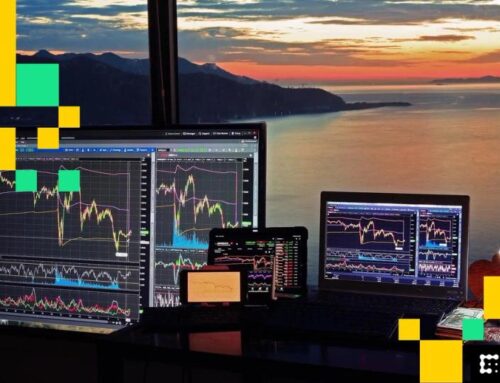The shipwrecked vessels posing an environmental risk to Maltese seas
November 2, 2025
In 2001, the Micronesian state of Yap declared a state of emergency when oil was discovered leaking into an environmentally sensitive lagoon.
The culprit? A World War II oil tanker, the USS Mississinewa, which had sunk in 1944 after being struck by a Japanese torpedo, going down with 60 souls and millions of gallons of fuel on board.
Almost two years of patching and surveying operations followed until, in 2003, the US navy undertook a month-long fuel recovery operation, retrieving almost two million gallons of oil.
But the Mississinewa is not the only such vessel; experts estimate there to be more than 8,500 ‘potentially polluting wrecks’ (PPWs) worldwide leftover from the two world wars. And, according to University of Malta maritime archaeology professor Timmy Gambin, up to five of them could be lying in Maltese waters.
“In Malta’s waters we have a large number of wrecks from all periods – including World Wars One and Two – and when these wrecks went down, they went down pollutants and all,” Gambin said.
While stressing that not all World War wrecks in Maltese waters were a threat, Gambin described PPWs as a “previously unknown or ignored danger”.
He noted that many WWI vessels had been powered by coal rather than oil, which, while not considered harmless, is not seen as great as an environmental threat as oil, which is susceptible to leaks.
But for wrecks that are a threat, due to either the presence of oil or unexploded ordinance, retrieval operations are complex and costly.
“The issue is an international, cross-border one. Removing oil from a wreck is extremely expensive,” said Gambin. Which is why, over the last year, experts from around the world have been meeting to discuss how to address the problem, culminating in the issuing of a landmark call to action earlier this year: The Malta Manifesto.
The manifesto – issued following a meeting in Valletta of experts in maritime archaeology, satellite imaging and artificial intelligence – calls on governments and industry to develop policies, financial structures and technologies to combat the problem.
Its recommendations cover seven main areas, including advocacy, the development of international collaboration and standards, resilience and response capacity, empowerment of coastal communities, finance, technology and data sharing.
 While not all wartime wrecks pose a threat, those that do require urgent action.
While not all wartime wrecks pose a threat, those that do require urgent action.‘Malta ahead on the issue’
Gambin said Malta was “ahead” on the issue, noting that “not all countries have gathered records of wrecks like it has; we have information about inbound and outbound voyages, whether the vessels were merchant or military and whether they were carrying cargo”.
And those types of records are vital for mitigation and recovery efforts, including helping authorities estimate how much of a danger wrecks might pose – which is where specialists like Maltese AI expert Dylan Seychell, who has been analysing these records and other data to find out how AI can help, come in.
“The [Malta Manifesto] team has a lot of data; the missing bit is how to connect the dots – and how to respond quicker,” said Seychell.
“Timmy invited me onboard following previous collaborations on archeological projects. We haven’t built AI models specifically for this yet; the task now is to better understand the data.”
The Valletta meeting was co-hosted by Gambin and Heritage Malta’s Underwater Cultural Heritage Unit, which provided images and other support to the project it describes as a “substantial milestone in international maritime cooperation”.
Scale of the problem
Although estimates for the number of PPWs in the Mediterranean are not immediately available, data provided by the interactive ‘Sunken Ships of the Second World War’ online database suggests there could be up to 2,000 wrecks from World War Two alone.
And while – perhaps unusually, considering Malta’s role as an important naval stronghold – waters in Malta’s immediate vicinity have a relatively limited number of wrecks, Gambin notes the issue is a cross-border one, a point Malta’s experts have been keen to emphasise.
“Malta pushed the idea of the sea having no borders. This isn’t a new idea per se, but in regard to decaying wrecks it’s very pertinent,” he said. “Ships in Italian waters would likely affect Malta, for example”.
And for Mediterranean communities like Malta, oil spills could be disastrous: “The main point for the Mediterranean is the dependence on the coast,” he said, pointing to tourism and fishing industries, and even the provision of drinking water as being especially vulnerable.
‘Global, toxic legacy’
Malta Manifesto documentation describes PPWs as a “global, toxic legacy of shipwrecks containing vast quantities of oil and hazardous materials, including munitions,” left over from two world wars.
And according to Project Tangaroa, there are an estimated 8,500 such wrecks littered across the world.
“We know that these wrecks are deteriorating – a process accelerated by climate change impacts. Many are becoming unstable and unsafe. Some are leaking and causing harm now,” the Malta Manifesto reads.
“We are entering a decade of severely heightened risk of catastrophic damage caused by leaking oil – damage to natural heritage and underwater cultural heritage that cannot be fully remedied. The harm to human wellbeing and the economic cost will be enormous.”
Search
RECENT PRESS RELEASES
Related Post



